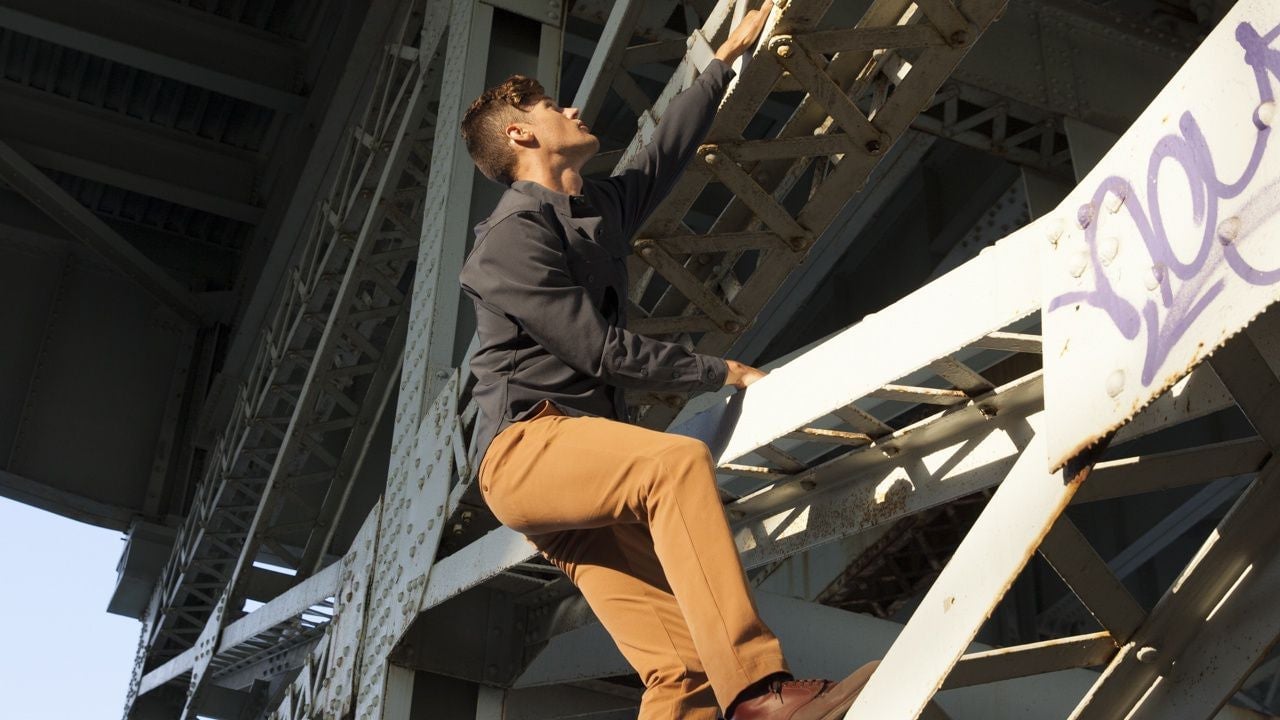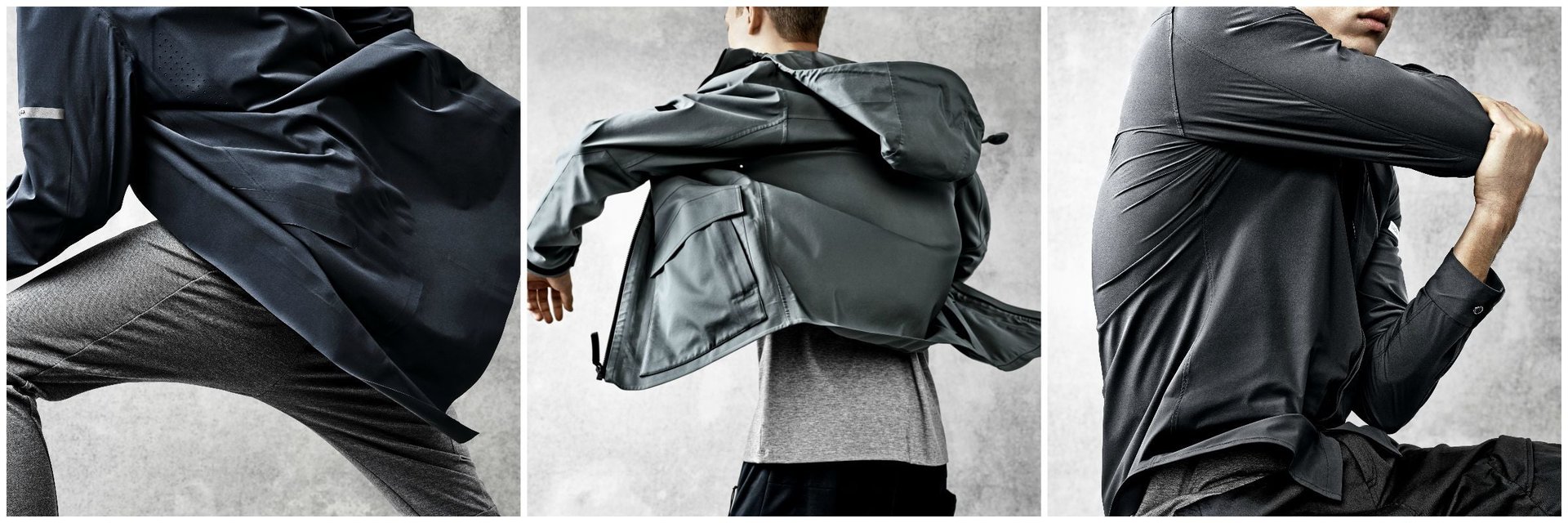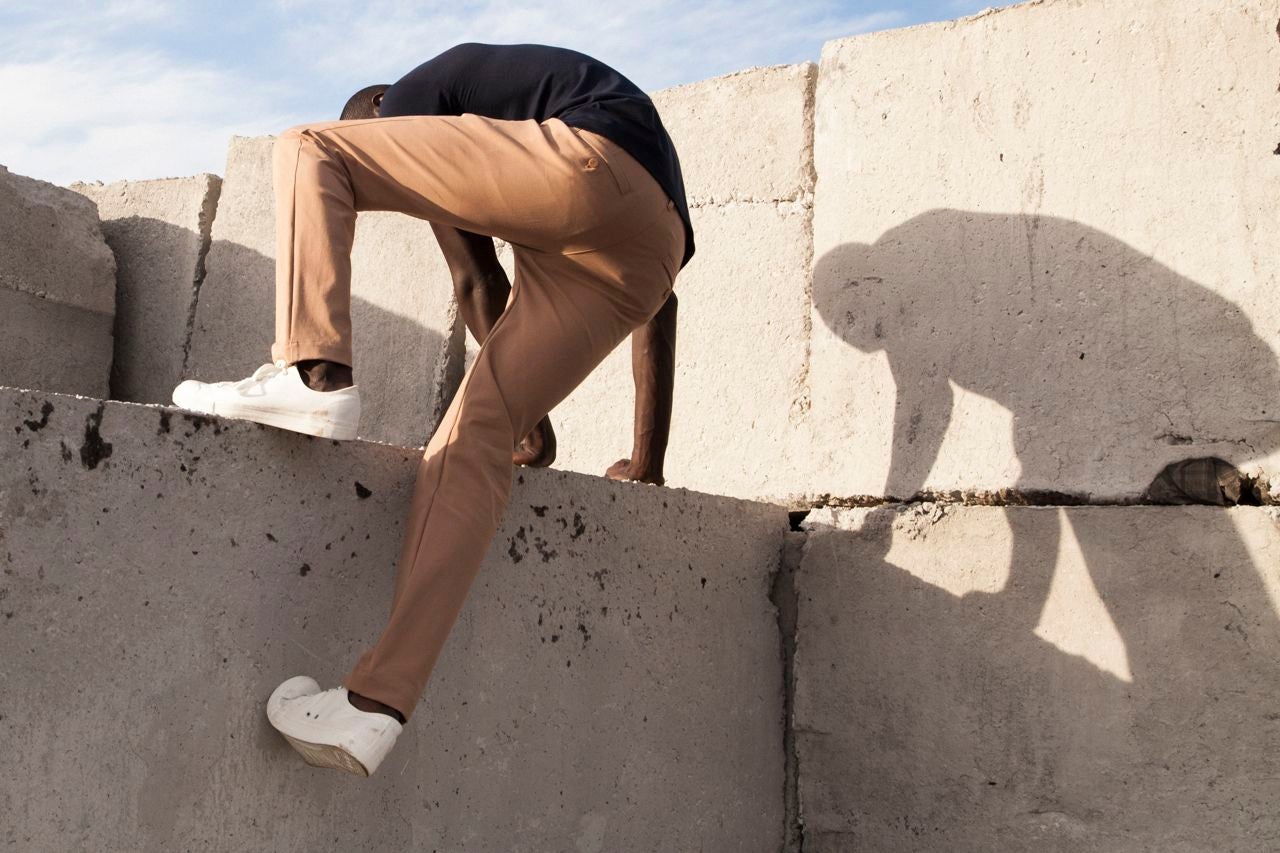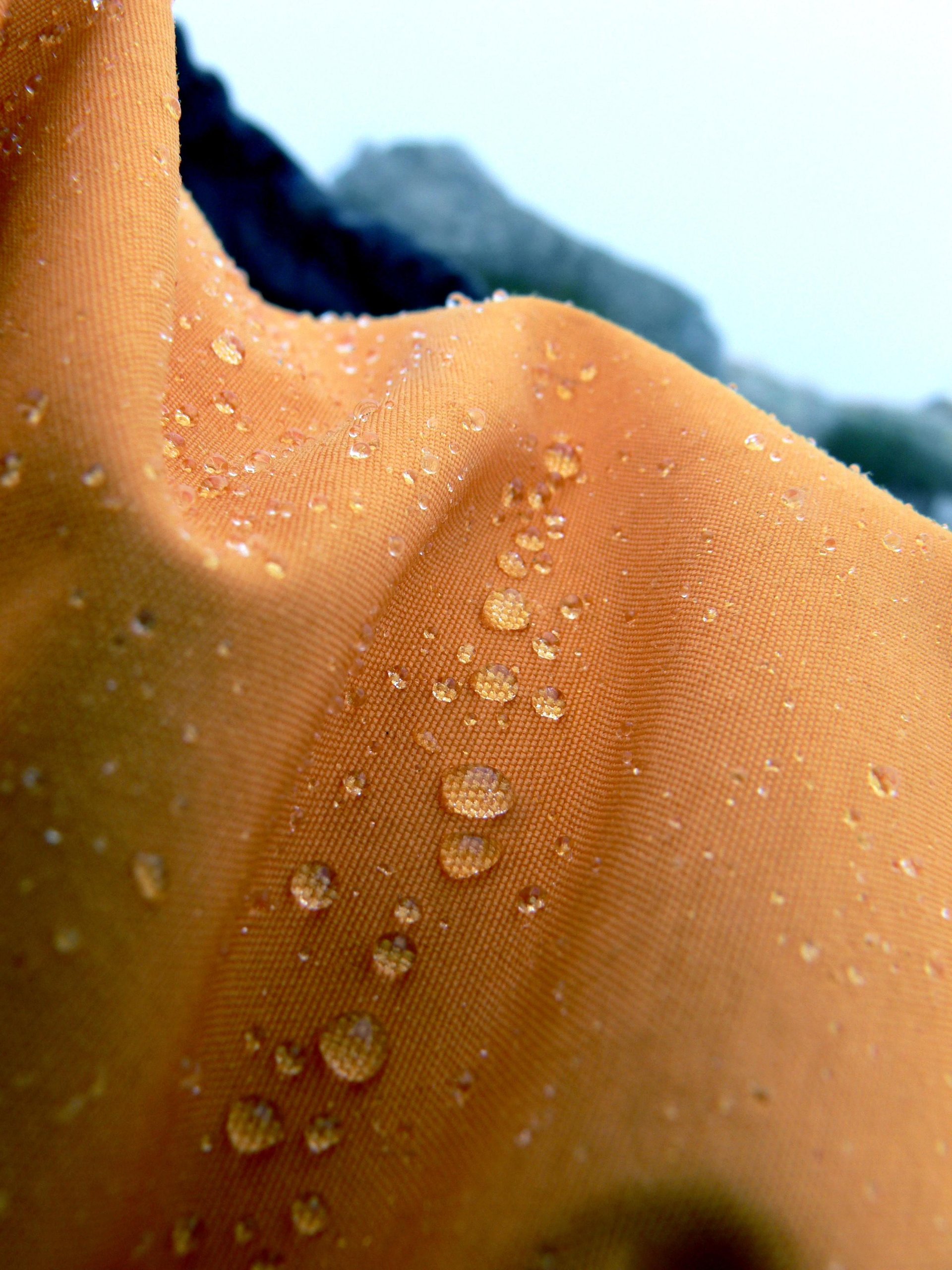From icy mountain tops to stuffy office cubicles, these clothes have you covered
Performance wear is typically designed for sports and extreme environments—brutally cold and windy mountain ranges, heat-baked deserts—situations where people actually need their clothing to protect them from the elements without restricting movement. Continuing advances in design, fabric technology, and manufacturing have made these clothes more high-performance than ever.


Performance wear is typically designed for sports and extreme environments—brutally cold and windy mountain ranges, heat-baked deserts—situations where people actually need their clothing to protect them from the elements without restricting movement. Continuing advances in design, fabric technology, and manufacturing have made these clothes more high-performance than ever.
Now a crop of designers has made it their mission to create advanced technical garments of this type for another harsh setting: cities.
“The winter in New York or a pouring spring day, the demands are really not a lot different than what you would need for climbing, an expedition, or helicopter snowboarding in Alaska,” Marc Daniels, co-founder of New York-based label Isaora, tells Quartz. “It’s cold and wet. You need to stay agile, warm, and dry.”
Brands such as Isaora, Outlier, Stone Island Shadow Project, Arc’teryx Veilance, Acronym, and a slew of others are creating techwear that’s functionally and aesthetically designed for urban life. If you’re biking to work, caught in a storm, or dealing with heat or cold, the clothes will handle it, and you can wear them without looking like you’re preparing to scale Kilimanjaro or compete in a triathlon.

Functionality fetish
The brands range quite a bit in terms of just how technical they get, and the most tech-centric labels, such as Stone Island’s Shadow Project line and CP Company’s Urban Protection, also tend to be the ones that look like they were designed for (mostly male) urban guerrillas. (That’s not entirely coincidence; military clothing is itself a kind of performance wear.)
The Berlin-based brand Acronym perhaps leads the pack in both regards. Designer Errolson Hugh’s soldierly techwear incorporates multifunctional elements at every chance, as in the brand’s J41-GT jacket, described as “a jacket/sweat shirt/wetsuit hybrid.”
Certain design elements, which the brand refers to as “systems” and “subsystems”—some patented—appear across multiple garments. Among the most James Bond-like is the “Escape Zip” zipper system. It allows you to fully unzip a jacket with a short upward gesture.
The brand is also known for its videos, where Hugh demonstrates the many, many features of his designs—which have even earned their own parodies. He has plenty of fans though. Nike recently tapped him to work on the relaunch of its techwear line, ACG, or All-Conditions Gear.
This high-end performance gear doesn’t come cheap. Arc’teryx Veilance’s chinos retail for about $350; a zip hoodie by Stone Island Shadow Project is nearly $400; and a worsted cashmere beanie—yes, a beanie—by Acronym tops $650.
Practical design
Outlier is one of the less technical and aesthetically aggressive of these labels—and one of the less expensive. It’s kind of like technical office wear, as are the offerings of Boston-based brand Ministry of Supply.
But the clothes are still high-performance. Outlier’s Climber pant, which costs around $200, is made of the company’s core fabric, a doublewoven, four-way stretch material made from a durable nylon-polyester-elastane blend. It’s treated to repel dirt, and it’s quick drying. If you think about the demands of cycling to an office job, especially on a hot day, it quickly becomes evident why these pants would be preferable to a pair of cotton jeans.

Actually that’s how Abe Burmeister, Outlier’s cofounder, came to design them. “I got really into cycling as a means of transportation,” he says. “If I wanted to ride my bike to a business meeting, I couldn’t, because I had to wear my nice pair of pants that I didn’t want to ruin, or if there was a chance of rain I didn’t want to risk getting caught.” The solution he was searching for—pants that were tough, allowed for a range of motion, wouldn’t end up filthy from riding, and dried quickly—didn’t exist. So he made them.
Outlier and Isaora, which designs with more of a fashion and sports bent, both keep prices lower by skipping wholesale and selling direct to consumers—the same model billion-dollar eyewear brand Warby Parker and the growing batch of e-bespoke menswear outlets use. The reason, according to both, is the same: They can offer a great product at a much more reasonable price than some of the competition. Isaora’s Microlight down jacket, for example, is a very affordable $225 at full price.
The ingredients
The performance these labels achieve comes largely from the materials they use, which lean heavily toward synthetics. Artificial insulation that’s lightweight but extremely warm—developed by NASA—can be found in many of Isaora’s pieces.
These materials have some distinct advantages over their non-performance alternatives. A typical three-layer, bonded fabric can be tough, water-resistant, and warm while remaining breathable and light. (Breathability refers to a fabric’s ability to allow moisture—sweat—to escape, not whether it lets air through.) Make a jacket out of such material, tape the seams to fully waterproof it, and you can use it nearly year-round in a range of conditions, depending how you layer underneath.
In fact, the modern era of performance wear can be said to have started with the creation of the synthetic fabric Gore-Tex, which is made with a polymer called polytetrafluoroethene. It’s more commonly known by its most famous brand name, Teflon—the stuff that keeps food from sticking to your pots and pans.
A chemical engineer named Bill Gore, who was using it to insulate wires, discovered in the 1960s that it could be stretched out. The pores of his new expanded polytetrafluoroethene, as it’s called, were large enough to let out water molecules, as from evaporating sweat, but small enough that a water droplet from rain couldn’t get through. He had inadvertently created a water-proof yet breathable material. Sandwiching it between a durable outer shell and a liner created a high-performance fabric, and in 1972 Gore-Tex went into production.

Gore-Tex and its imitators feature prominently in techwear, particularly the outerwear. Those qualities—lightweight, waterproof, and breathable—are like a holy trinity.
But natural materials certainly have their place, too. Outlier, for example, uses a lot of wool, which Burmeister calls “nature’s finest performance fabric.” It’s water-resistant and warm, but also moisture-wicking. The result is a natural temperature-regulating effect, and if the quality of the wool is good, as Outlier’s is, it’s extremely soft. “It’s more comfortable in a wider temperature range than any fabric out there,” Burmeister says.
Outlier also seems practically old-fashioned because it still relies mostly on sewing. Many garments from other labels are made with highly sophisticated construction methods. To create some of its pieces, such as its Ultrasonic Mac coat, Isaora works with select factories in Portugal and Italy that use an ultrasonic bonding process, which basically welds two pieces of fabric together using high-frequency vibrations. The resulting garment looks like it was made of a single piece of fabric with no seams, keeping it lightweight and weather-proof.
For American techwear brands, such as Aether, achieving that means manufacturing outside the US, since much of the machinery needed to do it moved overseas long ago.
How much is too much?
Some of the features offered by the most technical of these labels can seem unnecessary, to say the least. Acronym’s “Escape Zip” is amazing, but how many customers will find it truly useful? Ergonomic designs, such as those of the Argentina-born, London-based designer Aitor Throup, can be great on sports-oriented gear, but for a day in the city, unless you’re biking, the advantages are minimal. And ultrasonically bonded seams are strong and lightweight, but will the average customer be able to make use of the ounces shaved from the weight of the overall garment?
Then again, a big part of the appeal of these brands is the mix of form and function. Isaora, Arc’teryx Veilance, and Acronym attract fashion customers, which include those who like design for the sake of design, as much as those seeking technical elements.
For Isaora, looks are just as important as performance. “If we can push the envelope [on functionality], let’s do it—but we’re not going to compromise how the jacket looks while we do it,” Daniels says. “You should be able to have some options and look good while you’re walking through the rain or the snow or going for a run.”
And that’s really more the point. These labels make clothes that, above all, are adaptable, even if the average person won’t always need every feature.
Burmeister echoes the sentiment. “You can run, you can climb cliff faces, you can dance,” he says. “Or you can just go to work.”